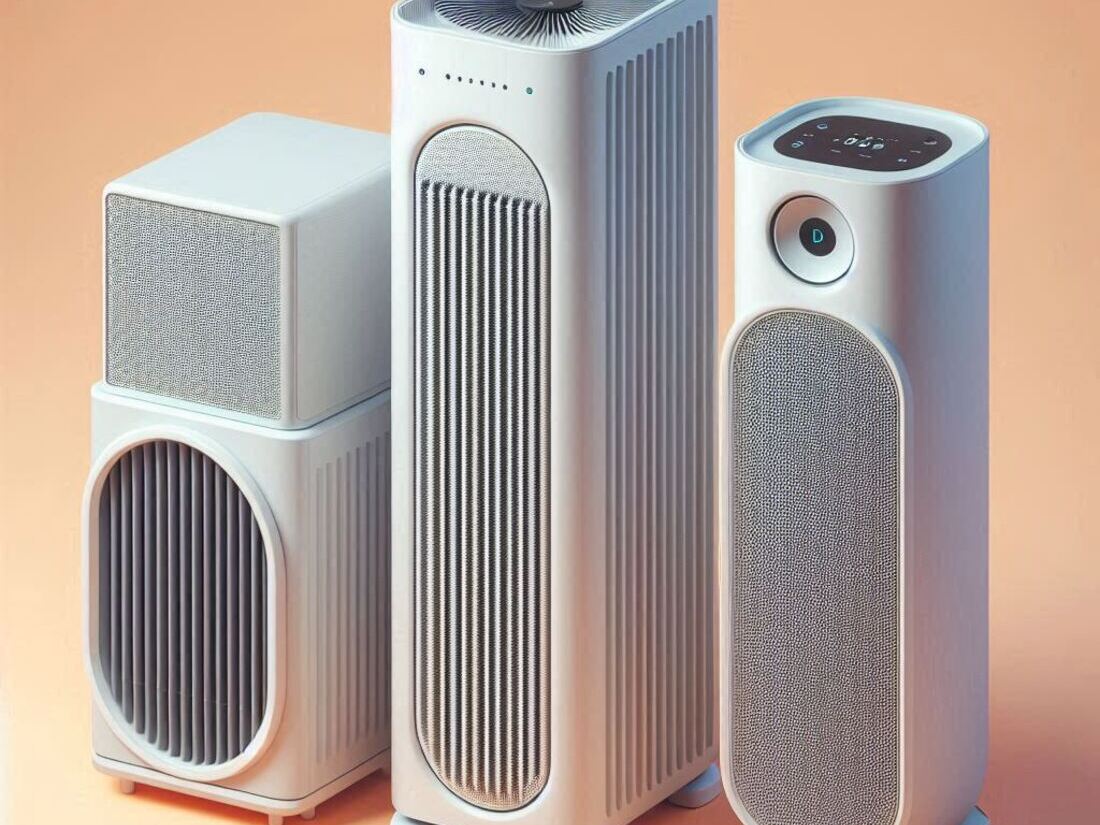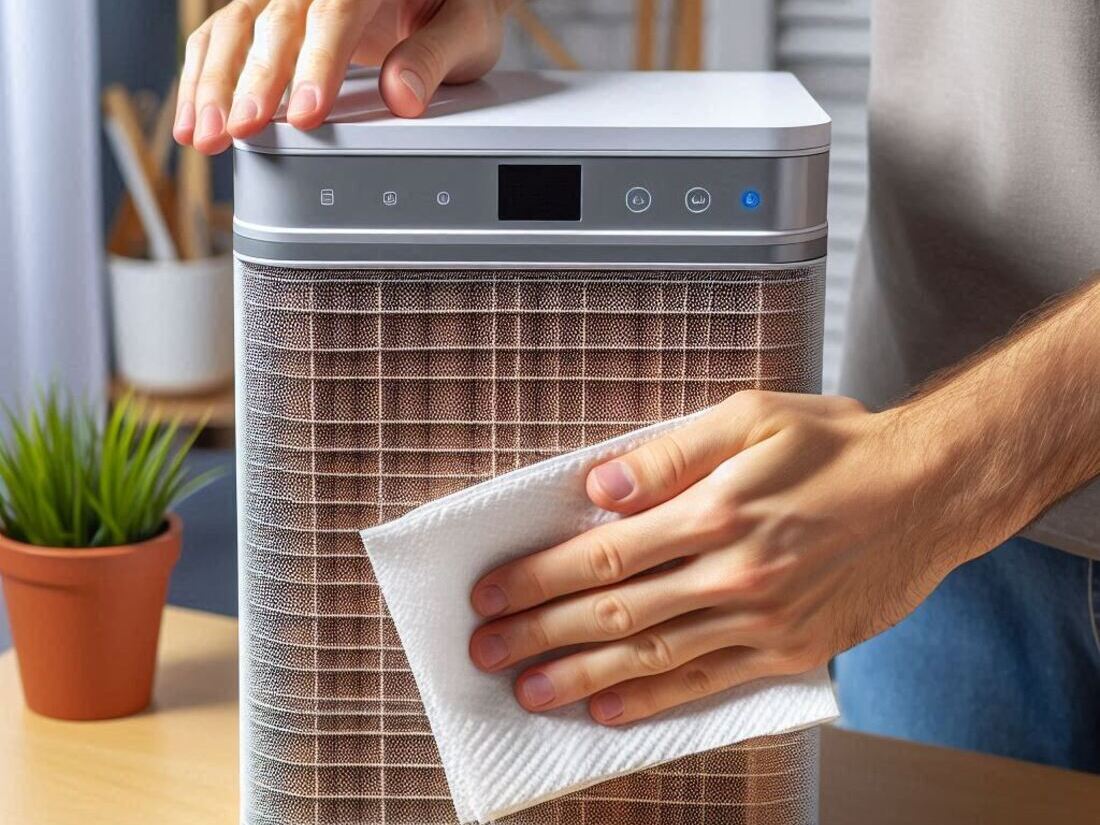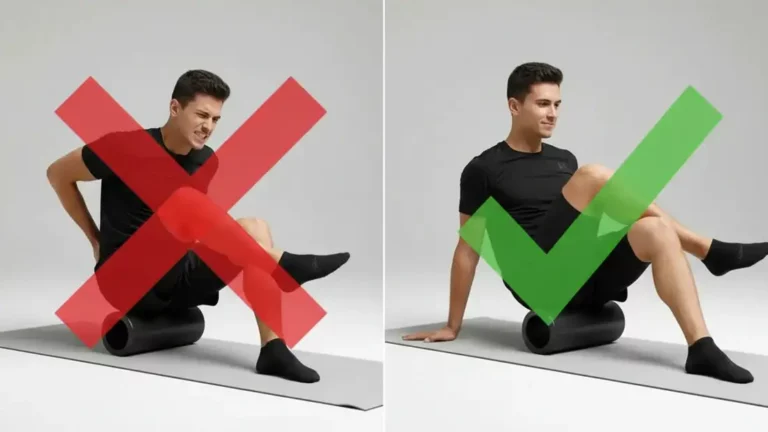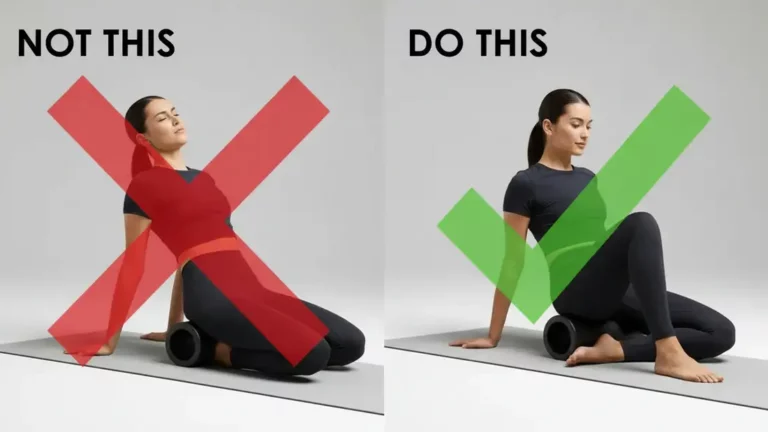Imagine stepping inside your home after a long day.
You kick off your shoes, sink into the couch, and take a deep breath… only to be met with a wave of dust, pet dander, or cooking odors.
Disappointing, right?
Unfortunately, indoor air can often be more polluted than outdoor air, filled with allergens, irritants, and even harmful pollutants.
But what if you could breathe easy in the comfort of your own home?

Air purifiers offer a powerful solution to combat indoor air pollution and create a healthier living environment.
This blog dives deep into the world of air purifiers, exploring their benefits, different types, factors to consider when choosing an air purifier, and how they can improve your indoor air quality.
The Silent Threat: Understanding Indoor Air Pollution
We spend a significant amount of time indoors, whether at home or work.
While we may think of fresh air as being outside, the reality is that our homes can harbor a variety of indoor air pollutants.
These pollutants can come from various sources, including:
- Dust mites: Microscopic creatures that thrive in bedding, furniture, and carpets.
- Pet dander: Tiny skin flakes shed by pets, a common allergen for many people.
- Pollen: Tracked in from outdoors, pollen can trigger allergy symptoms.
- Mold spores: Mold growth can release spores that irritate the respiratory system.
- Volatile organic compounds (VOCs): Emitted from paints, cleaning products, and building materials, VOCs can cause respiratory problems and headaches.
- Smoke: Secondhand smoke and smoke from cooking can irritate the lungs.
Exposure to these pollutants can trigger a variety of health problems, including:
- Allergies and asthma
- Respiratory infections
- Eye irritation
- Headaches
- Fatigue

Key Takeaways
- Our homes can harbor a variety of indoor air pollutants.
- Exposure to indoor air pollutants can trigger various health problems.
Air Purifiers to the Rescue: How They Work
Air purifiers act as filtration systems for your indoor air.
They draw in polluted air, trap pollutants using filters, and then release cleaner air back into the room.
Different types of air purifiers utilize various filtration technologies:
- HEPA filters: High-efficiency particulate air filters are highly effective at capturing dust, allergens, and other airborne particles.
- Carbon filters: These filters absorb gases and odors like smoke and cooking smells.
- UV light air purifiers: Ultraviolet light technology can kill bacteria and viruses.

Choosing the Right Air Purifier: Factors to Consider
With a variety of air purifiers on the market, choosing the right one for your needs can feel overwhelming.
Here are some key factors to consider:
- Air purifier size: Choose an air purifier with a Clean Air Delivery Rate (CADR) suitable for the room size you want to cover. CADR indicates the air purifier’s efficiency in removing pollutants from the air.
- Filter types: HEPA filters are a must-have for capturing allergens and particles. Consider additional filters like carbon filters if you want to address specific pollutants like odors.
- Replacement filters: Factor in the cost and frequency of filter replacements when making your decision.
- Noise level: Choose an air purifier that operates at a noise level you find tolerable.
- Additional features: Some air purifiers offer features like air quality sensors, automatic settings, and smartphone app connectivity.
Table: Comparison of Popular Air Purifier Types
| Feature | HEPA Filter | Carbon Filter | UV Light Air Purifier |
|---|---|---|---|
| Primary Function | Captures allergens, dust, and particles | Absorbs gases and odors | Kills bacteria and viruses |
| Effective Against | Dust mites, pet dander, pollen, mold spores | Smoke, cooking smells, VOCs | Bacteria, viruses |
| Good for | Allergy and asthma sufferers, those with respiratory problems | Those bothered by odors, pet owners | Homes with concerns about bacteria or viruses |
Beyond the Basics: Benefits of Owning an Air Purifiers
While cleaner air is the most obvious benefit, air purifiers can offer a range of advantages:
- Improved respiratory health: Reduced exposure to allergens and pollutants can improve symptoms for allergy and asthma sufferers.
- Reduced headaches and fatigue: Cleaner air can lead to better sleep quality and increased energy levels.
- Deodorization: Air purifiers can help eliminate lingering odors from cooking, pets, or smoke.
- Reduced risk of infection: UV light air purifiers can help kill bacteria and viruses circulating in the air.
- Protection from wildfire smoke: HEPA air purifiers can be particularly helpful during wildfire season by filtering out smoke particles.

Related Products: Top Air Purifiers for a Healthier Home
While consulting a healthcare professional or air quality specialist can help you determine the best air purifier for your specific needs, here are some top-selling and well-reviewed options on Amazon to get you started:
For Small Rooms (Under 300 sq. ft.)
- LEVOIT Core 300 Air Purifier: This compact air purifier is indeed a top seller on Amazon, suitable for small rooms under 300 sq. ft. It features a HEPA filter and is praised for its quiet operation and effectiveness in removing dust and allergens. It has received a high number of ratings, with customers appreciating its ease of use.
For Medium Rooms (300-500 sq. ft.)
- LEVOIT LV-PUR131S Air Purifier: The LEVOIT LV-PUR131S Air Purifier is designed for medium-sized rooms and features a HEPA filter, a carbon filter, and a night light. It has garnered a significant number of ratings on Amazon, with customers praising its ability to reduce allergies and odors, as well as its quiet operation and sleek design.
For Large Rooms (Over 500 sq. ft.)
- Levoit Core 600S Air Purifier: The Levoit Core 600S is a powerful air purifier suitable for large rooms over 500 sq. ft. It is equipped with smart features, a high-efficiency filter, a PM2.5 monitor, and smart WiFi connectivity. It has a high number of ratings on Amazon, reflecting its popularity and effectiveness in improving air quality.
For Allergy and Asthma Sufferers
- Blueair Blue Pure 411+ Air Purifier: The Blueair Blue Pure 411+ Air Purifier is designed for allergy and asthma sufferers, featuring advanced filtration technologies including a HEPA filter and a pre-filter. It has received high ratings on Amazon, with customers noting its effectiveness in reducing allergy symptoms, quiet operation, and sleek design.
Important Note: Remember, these are just a few examples, and the best air purifier for you will depend on your individual needs and budget. Before purchasing any air purifier, consider the factors mentioned previously (room size, filter types, noise level, etc.) Reading online reviews and comparing features can also be helpful in making your decision.
Living Breath Easy: Maintaining Your Air Purifier
For optimal performance, regular maintenance of your air purifier is crucial. Here are some key tips:
- Replace filters regularly: Follow the manufacturer’s instructions for how often to replace the filters. A clogged filter will hinder the air purifier’s effectiveness.
- Clean the unit: Wipe down the exterior of the air purifier with a damp cloth regularly. Consult the manual for any specific cleaning instructions.
- Monitor air quality: Some air purifiers have built-in air quality sensors that can indicate when it’s time to replace filters or take other actions.

Breathe Well, Live Well: The Final Take Away
Indoor air quality significantly impacts our health and well-being.
By investing in an air purifier and maintaining it properly, you can create a cleaner, healthier living environment for yourself and your family.
Here are some additional tips for improving your indoor air quality:
- Reduce sources of pollutants: Minimize the use of harsh chemicals, clean up spills promptly, and choose low-VOC paints and cleaning products.
- Increase ventilation: Open windows regularly to allow fresh air to circulate.
- Change air filters: Replace air filters in your HVAC system according to the manufacturer’s recommendations.
- Consider adding plants: Certain houseplants can help improve indoor air quality by absorbing pollutants.
Remember: Air purifiers are a valuable tool for combating indoor air pollution, but they are not a magic bullet. A comprehensive approach that combines air purification with other strategies will yield the most significant benefits for your indoor air quality and overall health.
Call to Action
- Share this blog with friends and family who might be interested in learning more about air purifiers and improving their indoor air quality.
- Leave a comment below and tell us about your experiences with air purifiers.
- Take a deep breath of clean air! By incorporating these tips and considering an air purifier, you can transform your home into a haven of healthy living.
Citations
- Environmental Protection Agency (EPA): [https://www.epa.gov/indoor-air-quality-iaq]
- Mayo Clinic: https://www.mayoclinic.org/diseases-conditions/allergies/symptoms-causes/syc-20351497
- Asthma and Allergy Foundation of America: [https://aafa.org/]
Disclaimer
The information in this blog is for educational purposes only and should not be construed as medical advice. Always consult with a healthcare professional for personalized guidance on managing allergies, asthma, or other respiratory conditions, and to determine if an air purifier is right for you.



